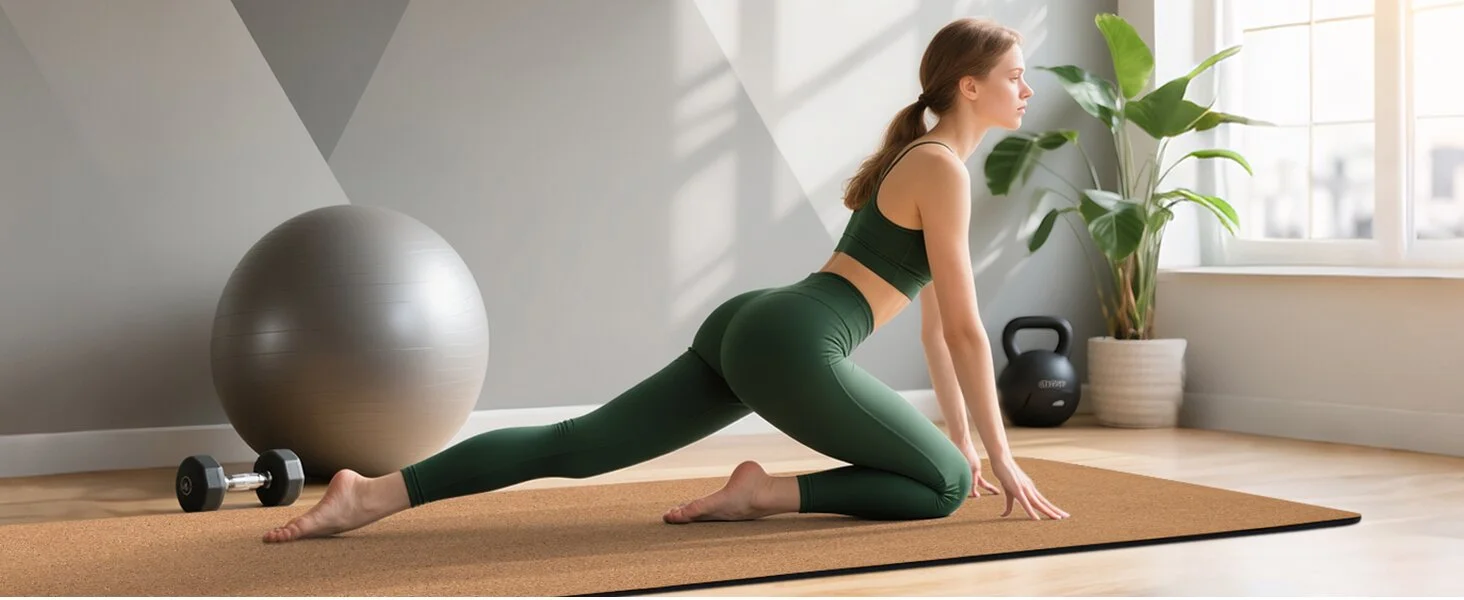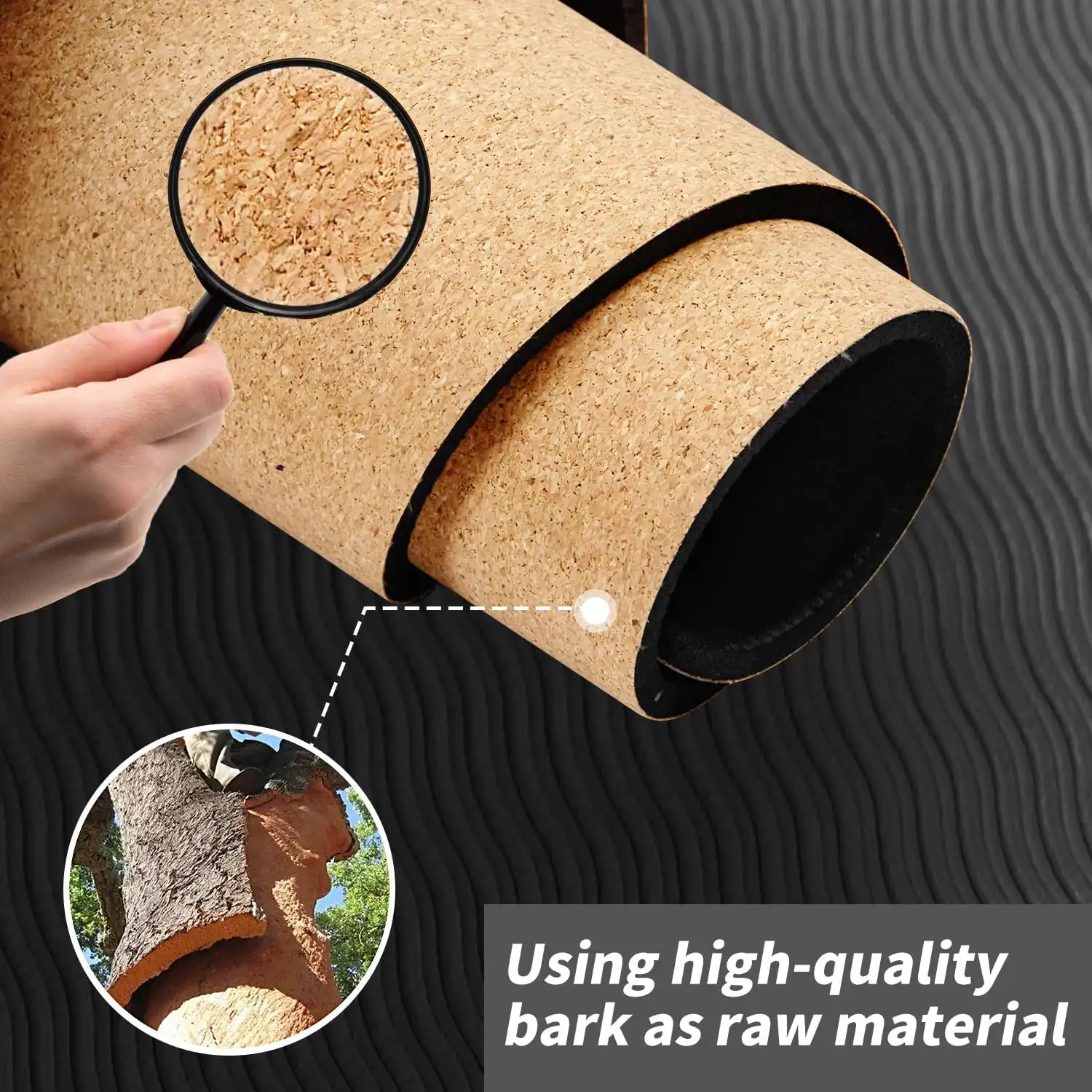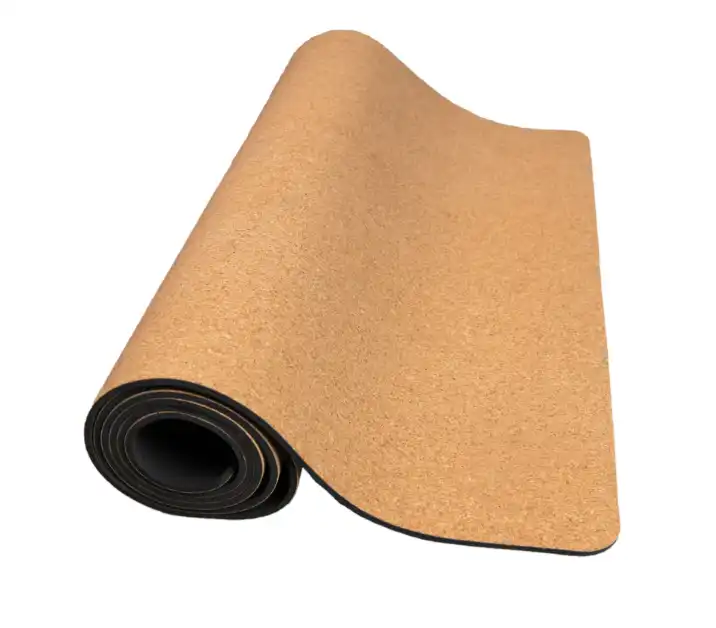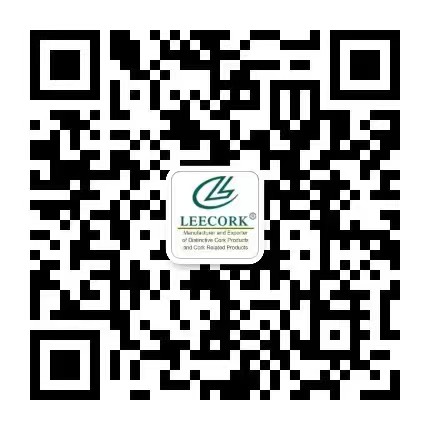Is a Cork Yoga Mat Really Eco-Friendly?
2025-08-12 16:58:53
In the world of yoga accessories, cork yoga mats have gained significant attention for their purported eco-friendly qualities. But are they truly as sustainable as they claim to be? The short answer is yes, cork yoga mats are indeed environmentally friendly. These mats are crafted from the bark of cork oak trees, a renewable resource that regenerates every 9-12 years without harming the tree. Unlike synthetic materials used in conventional yoga mats, cork is biodegradable and doesn't release harmful chemicals into the environment. Moreover, the production process of cork yoga mats typically involves fewer synthetic additives and chemicals, further reducing their environmental impact. The natural properties of cork, such as its antimicrobial nature and excellent grip, make it an ideal material for yoga practice while aligning with eco-conscious values. By choosing a sustainable cork yoga mat, practitioners can enhance their yoga experience while contributing to forest conservation and supporting sustainable industries.

Cork vs. Rubber Yoga Mats: Which Is More Sustainable?
When comparing cork and rubber yoga mats, it's essential to consider various factors that contribute to their sustainability. Cork, derived from the bark of cork oak trees, stands out as a highly renewable resource. These trees can be harvested multiple times throughout their lifespan without causing harm, making cork a sustainable choice for yoga mat production.
Biodegradability and Environmental Impact
Cork yoga mats have a significant advantage in terms of biodegradability. At the end of their lifecycle, cork mats decompose naturally without leaving harmful residues. In contrast, rubber mats, especially those made from synthetic rubber, may take longer to break down and could potentially release chemicals into the environment during decomposition.
Production Process and Energy Consumption
The production of cork yoga mats typically requires less energy compared to rubber mats. Cork harvesting is a manual process that doesn't rely heavily on machinery, reducing carbon emissions. Rubber production, particularly synthetic rubber, often involves more energy-intensive processes and chemical treatments.
Durability and Longevity
While both cork and rubber yoga mats can be durable, cork mats often have the edge in longevity. The natural antimicrobial properties of cork help prevent the growth of bacteria and mold, potentially extending the mat's usable life. This durability means fewer replacements over time, reducing overall resource consumption.
Sustainable Cork Harvesting: How It Protects Forests
The sustainable harvesting of cork plays a crucial role in forest conservation and biodiversity protection. Understanding this process sheds light on why Sustainable Cork Yoga Mats are considered an eco-friendly choice.
The Cork Harvesting Process
Cork is harvested from the bark of cork oak trees (Quercus suber) in a unique and sustainable manner. The first harvest occurs when the tree is about 25 years old, and subsequent harvests happen every 9-12 years. Skilled workers carefully remove the outer layer of bark without damaging the tree, allowing it to regenerate naturally.
Forest Ecosystem Benefits
Cork oak forests, known as montados in Portugal or dehesas in Spain, are vital ecosystems that support a rich diversity of plant and animal species. The sustainable harvesting of cork incentivizes the preservation of these forests, protecting them from deforestation and land-use changes. These forests also act as important carbon sinks, helping to mitigate climate change.
Economic Sustainability
The cork industry provides economic stability to rural communities in cork-producing regions. This economic incentive encourages local populations to maintain and protect cork oak forests rather than converting them to other uses. By choosing products like cork yoga mats, consumers indirectly support these sustainable forest management practices.

Carbon Footprint of Cork Yoga Mats: Truth Revealed
Understanding the carbon footprint of cork yoga mats involves examining their entire lifecycle, from production to disposal. This analysis provides insight into their true environmental impact.
Production and Transportation
The production of cork yoga mats generally has a lower carbon footprint compared to synthetic alternatives. Cork harvesting is a low-impact process that doesn't require heavy machinery. However, transportation can contribute significantly to the overall carbon footprint, especially if the mats are shipped long distances from production sites to consumers.
Lifespan and Disposal
Cork yoga mats typically have a longer lifespan than many synthetic mats, reducing the need for frequent replacements. At the end of their life, cork mats biodegrade naturally, releasing stored carbon back into the environment without introducing harmful substances. This closed-loop cycle contributes to a lower overall carbon footprint.
Carbon Sequestration
One often overlooked aspect of cork production is its role in carbon sequestration. Cork oak forests act as significant carbon sinks, absorbing CO2 from the atmosphere. The sustainable management of these forests for cork production helps maintain this important ecosystem service, effectively offsetting some of the carbon emissions associated with mat production and transportation.

Conclusion
Leecock Co., Ltd.'s products support forest conservation, biodiversity, and rural economy, while providing high-quality and environmentally friendly choices for yoga enthusiasts to practice. The natural characteristics of cork, such as grip, antibacterial properties, and durability, make it an excellent material for yoga mats, aligning its performance with environmental awareness.
As consumers become increasingly aware of the environmental impact of their choices, opting for a cork yoga mat represents a step towards more sustainable living. It's a choice that extends beyond personal use, contributing to broader environmental and social benefits. While the journey towards true sustainability in product manufacturing continues, cork yoga mats stand out as a positive example of how traditional materials can be adapted to meet modern eco-friendly standards.
Ready to enhance your yoga practice while supporting sustainable forest management? Xi'an Leecork Co., Ltd. has been at the forefront of cork product manufacturing since 2002, serving clients in over 50 countries worldwide. Our cork yoga mats combine durability, performance, and eco-friendliness, making them the perfect choice for environmentally conscious yoga enthusiasts. Whether you're an individual buyer, a corporate purchasing staff, or an offline store owner, we have the perfect cork yoga mat solution for you. Join our global community of satisfied customers, including pioneers in professional fields across Germany, France, USA, Canada, UK, and many more. Experience the difference of a truly sustainable yoga mat today. For more information about our cork yoga mats and other eco-friendly cork products, please contact us at info@leecork.com.
References
1. Silva, M. et al. (2020). "Sustainability of Cork Oak Forests and Products: A Review." Sustainability, 12(10), 4115.
2. Aronson, J. et al. (2019). "Cork Oak Woodlands on the Edge: Ecology, Adaptive Management, and Restoration." Island Press.
3. Pereira, H. (2018). "Cork: Biology, Production and Uses." Elsevier Science.
4. Rives, J. et al. (2021). "Environmental assessment of alternative cork yoga mat production scenarios." Journal of Cleaner Production, 278, 123517.
5. WWF Mediterranean (2019). "Cork Oak Landscapes, Their Products and Sustainable Use." World Wildlife Fund Report.
6. Boulton, C. A. et al. (2022). "The carbon footprint of yoga mats: A comparative analysis of materials and production processes." Environmental Science & Technology, 56(15), 10742-10751.
You May Like
0Related Industry Knowledge


